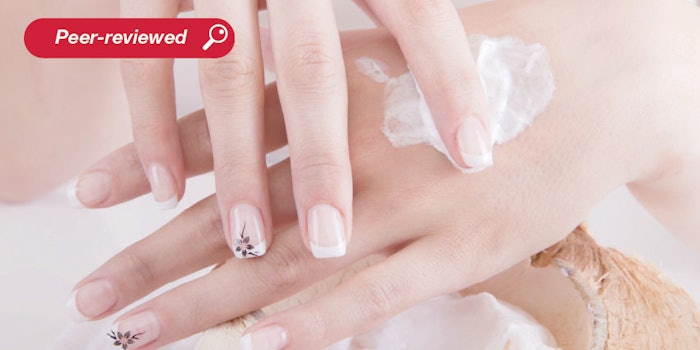
For the full version read the digital edition of C&T magazine.
Tropical palm oil, particularly white, refined, bleached and deodorized (RBD) palm oil and its derivatives, can be found in almost 50% of consumer goods. In recent decades, the increase in palm oil consumption has triggered the rapid loss of tropical ecosystems and species extinction due to deforestation for new palm plantations. This situation is not sustainable. Indeed, for the past 180 years, palm oil sourcing has been responsible for many social and economic problems in tropical regions around the planet.1
Demands by environmental groups and aware consumers have created a market for sustainable replacements for RBD palm oil. The challenge has been to create an alternative that is bioidentical to white RBD palm oil – which dominates the consumer goods market thanks to the unique characteristics of being a solid white fat at room temperature and a liquid at body temperature.
Research focused on this challenge has recently achieved bioidentical substitutes for white RBD-palm oil: a Lipomyces oil extracta and an oil-creamb derived through precision fermentation of the yeast. These ingredients were characterized and tested for loading capabilities in preliminary evaluations described here.
Lipomyces Oil
Extract Production
In brief, to produce the yeast oil, multiple genes naturally present in the lipogenic yeast Lipomyces starkeyi, which is generally regarded as safe (GRAS), are over-expressed. Manipulating the number of genes copied and their location creates a hyper-lipogenic strain, designated XYL403, which produces a neutral triglyceride; i.e., the Lipomyces oil extract. The yeast converts sugar into the oil extract at a high rate, filling the cells to > 90% of the yeast volume (see Figure 1a), which supports its commercial viability.
Upon the fermentation and harvest of Lipomyces XYL403, the Lipomyces oil extract inside of heat-treated cells is released by homogenization and purified away from fermentation residues. The homogenized cells are extracted to make a pure oil.
Lipomyces Oil Extract Characterization
The resulting oil extract has a lipid profile that is approximately 90% identical to RBD palm oil. It is a white solid at room temperature and a nearly clear liquid oil at body temperature (see Figure 1b), which provides the same desirable texture and feel commonly associated with RBD-palm oil. Figure 2 shows a visual comparison of the Lipomyces oil extract and commercial RBD palm oil.
Furthermore, free fatty acids, pigments, sterols and bleaching-related chlorinated hydrocarbons can be present in RBD palm oil due to bleaching, elevated temperature refining and deodorization that is normally performed on crude red tropical palm oil to make it a white fat. The Lipomyces oil extract is less than 50% saturated and is not bleached – omitting chlorinated hydrocarbons or colored contaminants; it also is essentially trans-fat and sterol-free.
GC: The Lipomyces oil extract produced as described was analyzed by gas chromatograph (GC) using a standardized derivatization and injected into a reference standard-controlled GC to obtain the lipid profile. Figure 3 compares the nearly identical profile of palm oil with Lipomyces oil extract. One minor lipid found at slightly elevated levels in Lipomyces oil extract was palmitoleic acid (C16:1), which is a common lipid found in human skin. At the low level of 3-7%, however, it has little impact on the desirable palm-oil-like physical properties, such as solid or liquid feel and melting point of the transition from a solid to liquid at 34°C.
For the full version read the digital edition of C&T magazine.
References
a Yoil (INCI: Lipomyces Oil Extract) and
b Yoil-Cream (patent pending) (INCI: Lipomyces Lipid Bodies (and) Citric Acid (and) Citrate (and) Gluconolactone (and) Glycerol (and) Vitamin E Acetate (and) Sodium Benzoate) are registered trademarks of Xylome.
- Zuckerman, J. (2021). Planet Palm. The New York Press, NY. ISBN 978-1-62097-523-7, 335 p.











